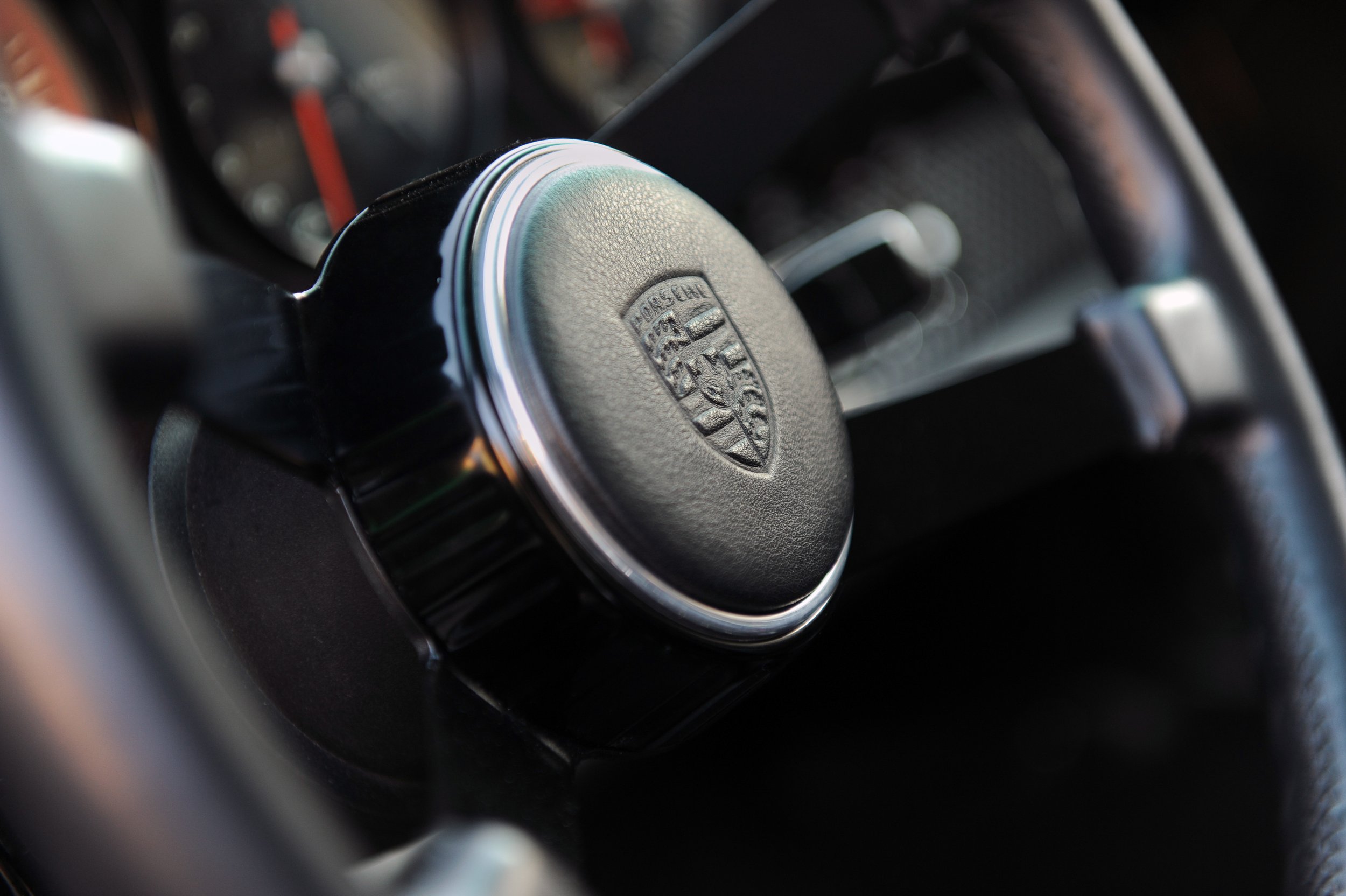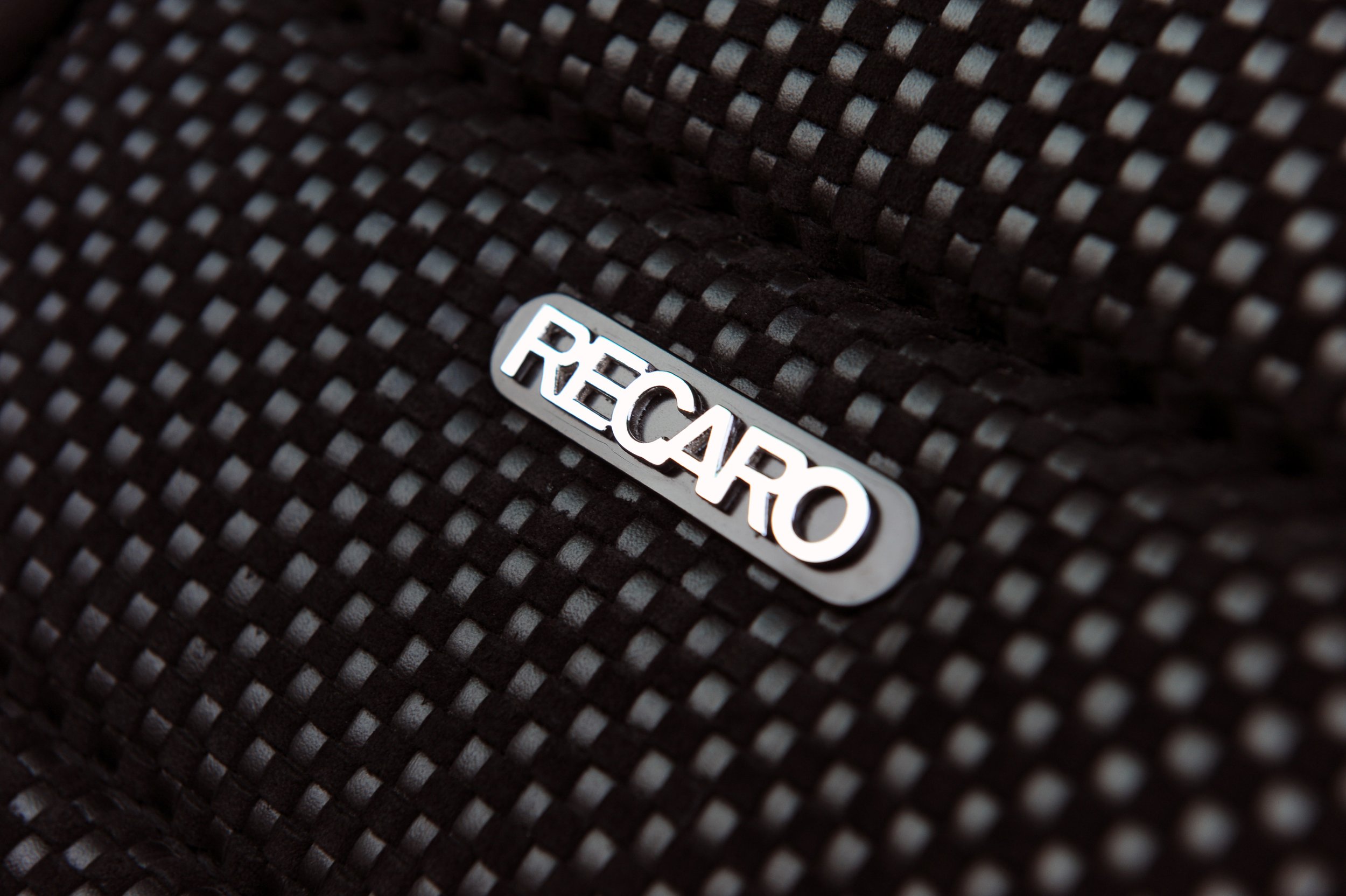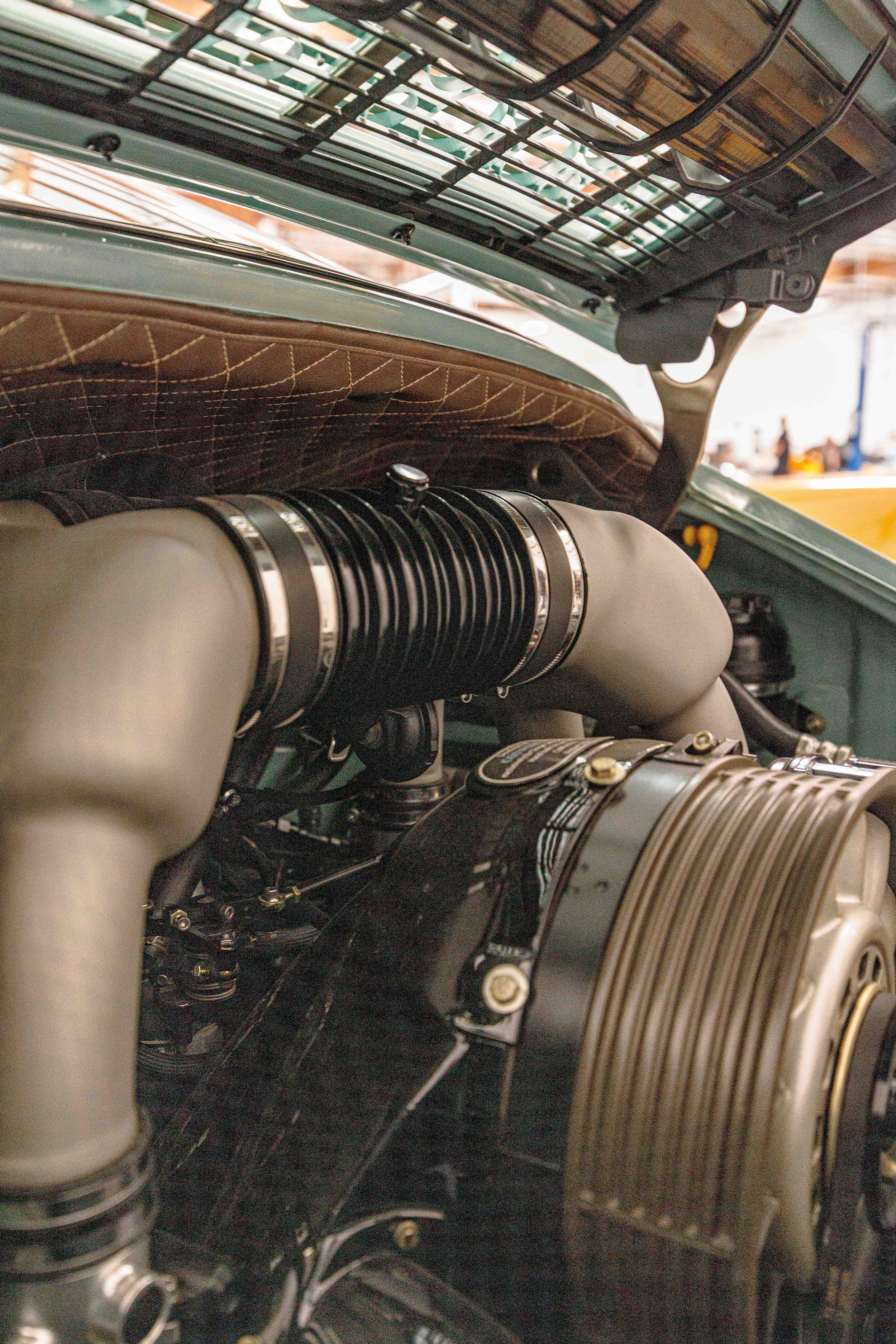TAYLOR GUITARS AND SINGER VEHICLE DESIGN
STORY | Tina Chau
PHOTOGRAPHY | Karl Noakes
Walk down the street in the late 1970s and early 1980s and you’d hear synthesizer-driven songs like “Rio” from Duran Duran or “Take on Me” from A-Ha blasting out of car radios. These were hard times for acoustic instrument makers; many struggled to market products that came from a more folksy, less hip era. Then, in 1985, an unlikely champion named Prince reminded the world why acoustic instruments mattered. On his new music video, a crowd of dancers surround a stage filled with cellos, a piano, and a drum set. Early on, the camera focuses on a tall, beautiful woman playing a 12-string purple acoustic guitar. Prince dances from the crowd onto the stage and is handed one of his famous Cloud guitars, painted pure white. Luthiers all over the world breathe a sigh of relief during this moment.
The purple 12-string guitar used in “Raspberry Beret” was part of Prince’s 120-piece guitar collection and was built for him by Taylor Guitars. Many famous musicians have worked with Taylor Guitars to design an instrument with the tone, sound, and look that represented exactly who they are. Few understand this passion for personalization and customization more than Kurt Listug, one of the founders of Taylor Guitars. Kurt enjoys the process of agonizing over decisions and projects that require time to reach that pinnacle of perfection. Whether it was the decades it took to build a business or the years it took to remodel a home, Kurt recognizes the importance of patience for getting exactly what you want
BUILT WITH PATIENCE
On a long driveway lined with succulents, California Pepper Trees, and eucalyptus trees, a rich Oslo Blue Porsche 964 coupe sits basking in the sunlight like a cat napping in the one sunny spot of the house. The vintage Porsche greets our team as we turn into the Listug property near San Diego. Gathering around with high anticipation, we drank in all the details as if our eyes were parched and the blue 911 was water. We were the fortunate ones standing in front of Kurt’s Porsche 911, one of a kind and magnificent as reimagined by Singer. The car took four-and-a-half years to bring from inception to delivery, but it met every specification that Kurt wished for. His patience paid off.
With 500 leather colors to choose from, Kurt opted for a bold cognac-colored leather offset with black, white, and tan woven leather seat centers and dashstrip for the interior. Oatmeal carpet lines the sills, transmission tunnel, and lower surfaces of the rear compartment. The back engine bay and front luggage compartment have matching cognac leather lining with alabaster stitching. On the exterior, the car has nickel and rubber touring trim and a titanium sports exhaust system. Even the hinges for the back trunk lid are a paint-to-sample option; Kurt chose the nickel option without paint. Everything is sourced from the best partnering manufacturers and the car is put together completely by hand, usually requiring at least 4,000 hours of human work. The car is known as the Wyoming Commission—after the early Singer convention of referencing cars by their final destination—and bears a Wyoming license plate.
While other vehicles sit on his spacious driveway, Kurt seems to have always been a true Porsche aficionado. He can pinpoint the exact moment he decided he wanted one. Music producer Paul Rothchild gave Kurt a ride in his ’67 911S. Kurt recalls thinking to himself, “I’ve got to get one of these.” Once it made sense financially, Kurt chose a 993, then later traded it in for a ‘97 993 Turbo. Today his collection includes a Golf Blue RUF CTR Anniversary, a 964 (Carrera 4), a 993 coupe, a 991 Speedster, and a ‘71 911T built into a ‘73 RS Tribute in Metallic Green. Kurt is only just breaking in the Singer restoration, driving just 500 miles since delivery in March of 2022. “Where I live there are little winding roads and I can drive around after dinner and go and cruise the coast,” he says with a smile.
TAYLOR GUITARS: GIVE THE PEOPLE WHAT THEY WANT
Reaching this zenith of success was not an easy feat for Kurt and Taylor Guitars. Sitting by the infinity pool in his lush backyard, Kurt narrates the story of the humble beginnings of Taylor Guitars during the hippie era of the early 1970s. Growing up playing guitar and listening to The Doors and The Beatles, 20-year-old Listug met 18-year-old Bob Taylor while both were working at a co-op guitar shop called the American Dream Musical Instrument Manufacturing. When the business went up for sale, they found themselves as new owners, soon to experience extreme learning curves and profit challenges. Bob made the guitars and Kurt managed the sales and operations. After 12 years of hard work, which saw weekly production increase from 5 to 22 guitars, the two owners were finally able to pay themselves. Multiple times they risked going out of business but Bob and Kurt never waned in their push to succeed. They loved what they were doing and anything else just seemed uninteresting.
While Bob designed and made the guitars at the shop, Kurt ventured out to the local guitar shops in Bob’s van to sell the finished guitars. Enter McCabe’s, located just minutes away from the Santa Monica pier. More a local institution than a guitar shop, McCabe’s brought together guitar-playing surfers, professional musicians, and the guitar makers at Taylor. The surfers would wander up from the beach to hear the big-name acts (R.E.M., Tom Petty, Emmylou Harris, and more) that co-owner Bob Riskin brought to town. Kurt describes what came out of this fertile mix of talent: “McCabe’s would get suggestions from customers looking for this or looking for that. They had suggested doing a guitar with a cutaway … no one had done it at the time. They suggested pickups in guitars. People were wanting a good quality solid wood guitar that they could easily plug in. Over time, the Taylor brand became known as a company that made the modern acoustic, electric guitar with a cutaway and a pickup. We didn’t set out to do that, but it really happened just cause of responding to the market and it caught on and we made tons of them.” These guitars became some of Taylor’s biggest sellers.
The innovation and collaborative work between Taylor Guitars and shops like McCabe’s resemble many California success stories of companies that start out in garages with the doors open, with founders throwing ideas back and forth over a couple of cool beverages, and then evolve into giant, culturally impacting products years later.
SINGER: CHASING CALIFORNIA PERFECTION
Singer Vehicle Design shares a similar journey as many of these California “garage success stories.” Something about the California light and salt air must breed laid back, casual, and non-traditionalist inhabitants, encouraging a dreamer’s creativity to expand beyond boundaries built elsewhere. In 1992 when Rob Dickinson visited California from the UK and went to a house owned by a record company exec, he knew Southern California would be his home one day. He recalled thinking, “Why would you wanna live anywhere else? The food, cars, and weather are great. The people are beautiful. And the optimism’s here. And I never wanted to leave. I knew I’d found my place in the world where I could pursue my love for music but perhaps more importantly, my love of cars in this fabulously open-minded, no rules environment.” When the former frontman and guitarist of British band Catherine Wheel came to Los Angeles again in 2003 to record a solo album, he never left.
Recording his album in studios and racing around the winding canyon roads of Mulholland Drive in the Santa Monica Mountains and Hollywood Hills in his 1969 911E Porsche, Rob lived a Hollywood life not unlike his heroes James Dean or Steve McQueen, feeling like he could do anything he wanted in this town. Rob acquired the 911E in 2002, after traveling from New York to L.A. to check out the long-wheelbase car advertised on the Internet. Upon seeing the car in person, Rob came across two discoveries. First, the current owner was Hans Lapine, the head of VW Advanced Design studio in Santa Monica at that time and very well known in the Porsche world. Second, Hans’ father was Tony Lapine, former racing driver and head of design at Porsche in the 1970s and 1980s. Perhaps these influences helped him fall in love with the factory-painted Bahama Yellow exterior at first sight.
For five or six years, Rob sucked up the Southern California Porsche culture, gravitating to the R Gruppe, a California-founded club for classic Porsche enthusiasts that lived by the principle of modifying their Long Hoods (1973 or earlier) with performance upgrades for track, rally, or hill climb. With a past life studying car design in England, working at Lotus in their design studio, and restoring a 1974 2.4S he sold before moving to California, Rob started to tinker with his beloved car. He transformed the 911E into a cafe racer, something that could be driven on the road or on a track. He swapped the 2.0-liter engine for a 3.0-liter unit for increased performance and modified the rear fenders to accommodate the bigger wheels and tires that allowed the ideal stance. The stance was a significant detail for Rob, as he considers the relationship of the wheel and tire to be a big aspect of car design. Wittingly named the Brown Bomber, the car gained popularity as it was spotted around town and offers for purchase started coming in.
Sensing the desire and demand for modified classic Porsches, Rob founded Singer Vehicle Design in 2009 with the motto: Restored, Reimagined, Reborn. The first restoration, referred to as the Texas commission, was assembled in Singer’s original shop, a 2,500-square-foot space located amidst junk yards in Sun Valley. Still experimenting at the time, Rob used a G-series 911 versus the typical 964; it was one of two G-series Singer commissions. The result is a vibrant Singer Racing Green (imagine the color of freshly shucked peas) with ghosted stripes and orange lettering, an interior with different textures of black leather, and a 3.8-liter, air-cooled flat six Ninemeister engine to power the car. The restoration began in 2009 and was completed in 2011.
To this day, Rob credits the California car culture and no rules mindset for the continued evolution and success of Singer. “Los Angeles didn’t just help me. It was a necessity. Singer really wouldn’t exist without it. These nut job ideas that would get laughed at in my local pub in England. California is quite the opposite, it inspires you, energizes you. You look around and people are having a go at life. You stick your neck out and you’re brave and you’re fearless and you dream a little and you go for it.”
A SHARED OBSESSION WITH PERFECTION
Stubborn and painfully obsessed with perfection to the point of exhaustion since he was young, Rob admits to defining himself by any work he touches. He’s always churning the wheels for creativity and chasing a vision for brilliant ways to restore 964s to the peak of what they can be. Just like Kurt Listug once marked guitar sales on a board on the wall as a sign of success, Rob emphasized his own vision of success by spray-painting the phrase “Everything is important” on one of his original shop walls. His “company memo” was an epiphany that emerged after spending hours one late night debating where to place post-it notes on a car project with the question, “Is this important?” written on them.
Singer has come a long way since those start up days and times where they too, struggled financially; they now have a 115,000-square-foot museum-like facility where customers can come to customize their donor cars with any “special wish” that lies within the Singer design boundaries. “They’re all cuts off my original idea, which was to present a restored car in a way where people make the choices to make the car their own. But those choices would be curated by me, so they couldn’t make bad choices. It becomes a playground for our clients. The idea is to have enough building blocks to create their own perfect Porsche.”
In the spacious and all-white painted space, there is a special reserved open area for customers to explore infinite design possibilities, including numerous paint samples organized on top of each other by color category and various interior fabric and leather swatches set next to the different metal type grommets. Upon entering the front doors, our eyes gravitated to the sight of four reborn 911s covered by signature orange Singer car covers. Walking around and seeing all the designated workstations for each step of the restoration process, it was not so different from the tour of the Taylor Guitars factory the day before, as we could see how much these two companies have expanded and innovated their methods to produce their instruments. We happened into a rare moment as a technician uncovered a 911 from Singer’s latest project, the DLS (Dynamics and Lightweighting Study). We delighted in hearing the roar of the Williams engine and explored all the customized facets of the 1-of-75 soldout commissions at the price tag of two million dollars.
Singer and Taylor: two California companies fabricating art that generates different sound waves but have so much in common. Their founders, obsessed with perfection, masters of their craft, and believers in the philosophy that it takes time to create the ideal product, are like threads from the same cloth. Whether it is Taylor Guitars waiting 200-300 years for a Sitka Spruce to grow or Singer investing two years to get the right formulation for the quintessential nickel tone, the pursuit of perfection is worth it to Kurt and Rob. Describing the difficulty of decision-making with his own Singer commission, Kurt said, “Everything we do in the business starts with an idea, then you work through the idea. It is created from nothing. Every guitar model starts with an idea and a desire. I’m used to that and I love that creative process. Same thing with my Singer commission. It’s something I really love. And sometimes it’s really hard to get the color just right and you want to give up. And I had a lot of frustrations with getting that car right until we finally got to a certain point.”
As an exchange of gifts, Kurt worked with Andy Powers, Taylor’s long-time Chief Guitar Designer and recently appointed CEO and President, to design a special guitar for Rob made with Hawaiian Koa that has the Singer mantra “Everything is important” emblazoned on the fretboard. While the two guitarists have not had a jam session together, perhaps the Wyoming commission is their “jam session,” a personalized instrument for a solo fan that can be loved by all. Rob warmed to this idea: “Yeah. It’s a good way of putting it. He had his choices to make, and I put my fingers on certain strings on his guitar and I do my thing and that’s certainly some synchronicity there. It’s indicative isn’t it that it’s something that’s built with some love by hand?”
It’s late afternoon when Kurt takes me for a drive down the winding roads of his neighborhood in his Singer restoration. The soft California sunlight comes through the sunroof and glows on the buttery cognac leather. New leather smells intermingle with the sea salt air and the faint scent of honey from the purple blossoms of the Jacaranda trees. Even though the car is equipped with Apple CarPlay, we ride with just the sound of the naturally aspirated air-cooled flat-six engine fl owing in on the warm breeze. Thanks to the weight reduction from the carbon fiber body panels, Kurt zooms lightly around the curves. A classic Morgan drives in front of us and suddenly we’re transported to a Gatsby-like experience, drinking in the moment and smiling every time we hear the engine rev. During the more leisurely parts of the drive, Kurt points out how much he loves the manual adjustment knobs for the side mirrors. Looking around the interior, it’s extraordinary to see and feel the contrast between the classic details of the car, like the early Porsche green face style gauges in the instrument cluster, and the modern high-performance modifications such as the 4.0-liter engine, which is assembled by Porsche Motorsports North America to Singer’s specification. In my zeal and excitement, I think of what Rob said to me about the art they both made together: “Hopefully he’ll cherish the car in the same manner that I’ll cherish his wonderful guitars. And it’s cool, right? Taylor’s a product of California. So are we. There’s something about the spirit here.”
These days, Kurt and Rob are both extremely busy with new projects and their continued involvement with their respective companies. Singer has recently started a Turbo study, in which they will be celebrating the era of the classic 930 while still using a 964 chassis. Taylor Guitars is committed to being environmentally conscious, using urban forest trees and managing an ebony sawmill in Africa they co-own.
It is nice to imagine that one day Kurt and Rob will find themselves driving on the twisty roads and tight turns of the California coast with clear skies, blue waves, and engine roars echoing off the mountains. Somewhere at a beach bar, Rob parks his original Brown Bomber next to the Wyoming and the two men finally sit down and share some laughs over drinks talking about music, cars, and their next adventure.










